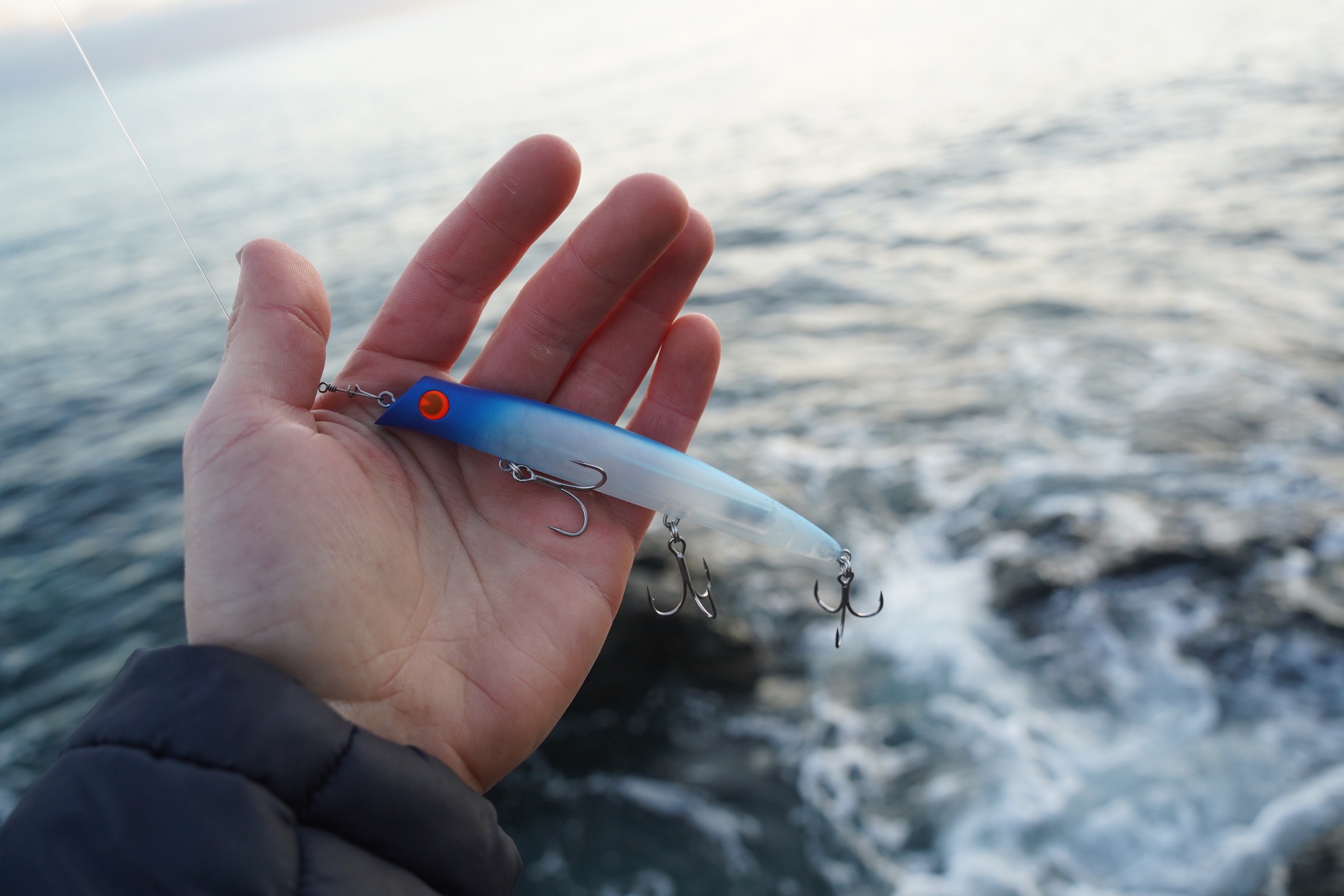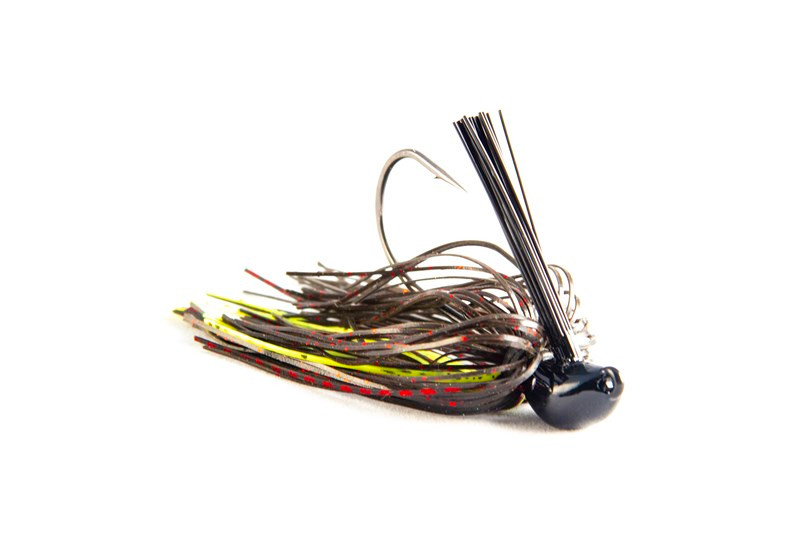Bass Fishing Lures: How to Organize and Maintain Your Collection
Wiki Article
Discover the Finest Techniques for Picking Bass Lures for Your Following Angling Journey
Picking the best bass Lures can substantially influence fishing success. Anglers must consider numerous elements, such as seasonal patterns and water clarity. Understanding bass actions is essential (Bass Lures). Choosing Lures that resemble natural prey can cause better outcomes. Yet, many are unsure concerning the ideal strategies to execute. What strategies should one focus on to boost their fishing experience? The responses depend on taking a look at particular conditions and adjusting as necessaryRecognizing Bass Behavior and Environment
Understanding the nuances of bass habits and habitat is essential for any kind of fishermen aiming to improve their fishing success. Bass are often found in different environments, consisting of storage tanks, rivers, and lakes, where they look for framework such as submerged rocks, plants, and dropped trees. Their actions is greatly affected by water temperature, light degrees, and readily available forage.Throughout warmer months, bass have a tendency to be a lot more active, typically populating shallower waters, while in chillier months, they pull away to much deeper areas. Furthermore, bass exhibit patterns of feeding, commonly being more hostile during dawn and sunset. They are opportunistic killers, preying on smaller sized fish, bugs, and crustaceans. Understanding these aspects can help anglers identify prime fishing locations, as well as the very best times to fish. Identifying bass actions in connection with their environment is crucial for successful angling, assisting fishermens in making informed choices about where to cast their lines.
Matching Lures to Seasonal Conditions
As fishermens adapt their strategies to altering seasons, matching Lures to seasonal conditions becomes an important technique for boosting angling success. In spring, when bass are emerging from winter dormancy, fishermens typically use spinnerbaits and shallow-running crankbaits to mimic the movements of target. Summer demands a change to topwater Lures or soft plastic worms, as bass seek shade and cooler waters. During the fall, when bass are fattening up before winter months, larger Lures that mimic baitfish can be effective. Wintertime asks for an extra subtle method; jigs and slow-moving skill baits frequently generate far better results as bass come to be tired. Recognizing these seasonal patterns helps anglers choose the ideal appeals, consequently enhancing their opportunities of a successful catch. By aligning attraction choices with the natural actions of bass throughout the year, fishermens can maximize their fishing experience and improve their total success on the water.The Importance of Color Selection
Shade choice plays a vital function in bass angling, as it can substantially impact a fisher's success. Factors such as water quality, seasonal modifications, and the specific preferences of various bass varieties all affect which colors are most reliable. Understanding these components enables fishermens to make informed selections that improve their angling experience.
Water Clearness Factors To Consider
When the water quality differs, selecting the appropriate bass appeal color ends up being crucial for attracting fish. In clear water, all-natural colors such as shad or bluegill patterns tend to be more reliable, as they imitate the target bass are accustomed to seeing. Conversely, in murky or discolored water, brighter shades like chartreuse or fire tiger can boost visibility, making it much easier for bass to detect the appeal. The contrast between the lure and the surrounding setting plays a considerable role in angling success. Anglers ought to also think about the moment of day; lighter colors might function much better in brilliant sunlight, while darker tones can be more effective throughout low-light problems. Adjusting appeal shade to water clearness optimizes the opportunities of a successful catch.Seasonal Color Patterns
Just how do seasonal adjustments affect bass actions and attraction performance? As temperature levels shift throughout the year, bass readjust their feeding routines and chosen habitats, making color option essential for successful angling. In spring, when bass spawn, brilliant shades like chartreuse can stand out. Summer season typically call for more all-natural hues, such as environment-friendly pumpkin or shad patterns, as bass seek to mix in with their surroundings. Throughout loss, vibrant shades like orange and red simulate the changing foliage, tempting bass as they get ready for wintertime. In winter, suppressed tones such as grey or white may be extra reliable, as bass come to be inactive. Eventually, recognizing seasonal color scheme makes it possible for fishermens to pick Lures that resonate with bass's present habits, boosting their chances of success.
Species-Specific Preferences
Understanding species-specific preferences is vital for fishermens seeking to maximize their lure option. Various bass varieties, such as largemouth and smallmouth, exhibit one-of-a-kind shade preferences based upon their habitat and feeding behaviors. Largemouth bass commonly like darker hues, particularly in murky waters, where shades like dark and black environment-friendly simulate all-natural target. In comparison, smallmouth bass are more probable to reply to brighter colors, such as chartreuse and orange, especially in clear waters. In addition, water clarity and light problems can affect these preferences, making it essential for anglers to adapt their attraction color as necessary. By thinking about these species-specific choices, fishermens can enhance their chances of a successful angling trip, ultimately improving their total experience on the water.Choosing the Right Tempt Type for Different Scenarios
Picking the appropriate appeal type for various fishing situations is crucial for success on the water. Fishermens must take into consideration factors such as water quality, climate condition, and the bass's feeding habits. For murky water, darker-colored lures, such as jigs or spinnerbaits, can be reliable, as they create a solid shape. In clear water, natural-colored Lures like soft plastics or topwater baits might tempt careful bass.When fishing in heavy cover, using weedless rigs or heavy jigs can aid browse through barriers without getting. Conversely, open water circumstances may profit from crankbaits or swimbaits that can cover greater distances. Furthermore, throughout cooler months, slower-moving Lures often tend to be much more efficient, while warmer conditions may call for faster retrieves. By adjusting appeal choices to specific environments, fishermens increase their possibilities of a successful catch.
Try out Size and Activity

Fishermens commonly trying out a variety of dimensions and activities to determine what jobs best under differing problems. A slow, refined action may be excellent in colder water, while a fast, hostile get might be a lot more effective in warmer temperatures. By carefully observing the bass's responses to these variations, fishermens can refine their strategy and boost their chances of an effective catch. Ultimately, Related Site the best mix of dimension and activity can make a considerable distinction on the water.
Reading Water Problems for Better Tempt Selections
Understanding water problems is essential for selecting the right bass appeal. Factors such as water clearness and temperature level can substantially affect fish habits and feeding patterns. By analyzing these problems, anglers can make enlightened choices that enhance their chances of an effective catch.Evaluating Water Quality
Exactly how does water quality influence the effectiveness of bass appeals? Water quality considerably influences bass habits and the visibility of lures. In clear water, bass have a tendency to be a lot more mindful, making natural-colored Lures much more reliable as they mimic victim closely. Fishermens may pick lighter, subtler shades to avoid alarming fish. On the other hand, in dirty or stained water, brighter and even more lively shades stick out, attracting focus even in low visibility problems. In addition, the kind of attraction can differ; slower-moving Lures could function much better in clear water, while quicker, extra hostile presentations can tempt bass in murkier atmospheres. Understanding the clarity of the water allows anglers to choose Lures that optimize their possibilities of success throughout their fishing journeys.Comprehending Water Temperature Level
As water temperature changes, it directly affects bass habits and their feeding patterns, making it crucial for fishermens to consider when picking lures. Usually, bass prefer warmer temperatures, commonly in between 65 ° F and 75 ° F, where their metabolic process is enhanced, resulting in enhanced feeding task. In cooler water, bass become lethargic and may favor slower-moving appeals, such as jigs or soft plastics. On the other hand, during warmer months, faster discussions like crankbaits or topwater Lures can be extra reliable. Anglers must likewise consider seasonal adjustments; for instance, spring warming causes hostile feeding as bass prepare to generate. By comprehending just how temperature affects bass, anglers can make educated decisions on attraction option, dramatically improving their chances of success.Tips for Organizing and Maintaining Your Entice Collection
While many anglers concentrate on selecting the appropriate Lures for their next angling journey, organizing and preserving an appeal collection is just as crucial for boosting efficiency and efficiency. A well-structured collection enables fishermens to rapidly find the Lures they require, decreasing time spent rummaging via deal with boxes.To start, anglers should classify Lures by type-- crankbaits, jigs, or soft plastics-- making it much find out easier to discover specific alternatives. Utilizing tackle trays or boxes with flexible compartments can aid keep everything organized. Classifying containers streamlines the procedure even more, helping fast identification.
Routine upkeep is likewise crucial; fishermens must evaluate Lures for indicators of wear, such as rusted hooks or harmed paint, and change them as required. Cleansing Lures after each journey avoids deterioration and makes sure durability. By applying these business and upkeep techniques, anglers can improve their angling experience and ensure their Lures are always in optimum problem.
Often Asked Concerns
What Are the most effective Brands for Bass Lures?
The most effective brands for bass Lures consist of Rapala, Strike King, and Berkley. These brand names are renowned for their innovation, high quality, and performance, appealing to both beginner and skilled fishermens looking for successful angling experiences.The Amount Of Lures Should I Take on a Journey?
A normal fishing expedition need to consist of around 5 to 10 lures, enabling adaptability while staying clear of image source clutter. This choice must incorporate different types and colors to adapt to altering conditions and fish preferences.Can I Make My Very Own Bass Lures?
Yes, people can make their own bass Lures utilizing different products and strategies - Bass Fishing Lures. Crafting Lures permits modification, enabling anglers to trying out sizes, forms, and shades to suit certain angling problems and choicesWhat's the Average Lifespan of a Bass Draw?
The average lifespan of a bass lure differs, usually lasting from a couple of months to several years, depending on worldly quality, usage regularity, and environmental conditions. Correct treatment can substantially expand an appeal's usability.Exist Particular Lures for Night Fishing?
Yes, there specify Lures created for evening fishing. Dark shades and Lures that produce vibrations, such as spinnerbaits or jigs, usually bring in bass in low-light conditions, boosting visibility and setting off predative impulses.On the other hand, in dirty or discolored water, brighter shades like chartreuse or fire tiger can enhance visibility, making it less complicated for bass to spot the appeal. Larger Lures can draw in bigger bass, while smaller Lures may be extra reliable for catching smaller sized fish. Furthermore, the kind of appeal can vary; slower-moving Lures may work better in clear water, while quicker, much more aggressive presentations can attract bass in murkier settings. As water temperature level fluctuates, it directly affects bass actions and their feeding patterns, making it crucial for anglers to think about when picking appeals. While lots of anglers focus on selecting the best Lures for their next fishing journey, keeping a lure and organizing collection is similarly vital for enhancing performance and performance.
Report this wiki page